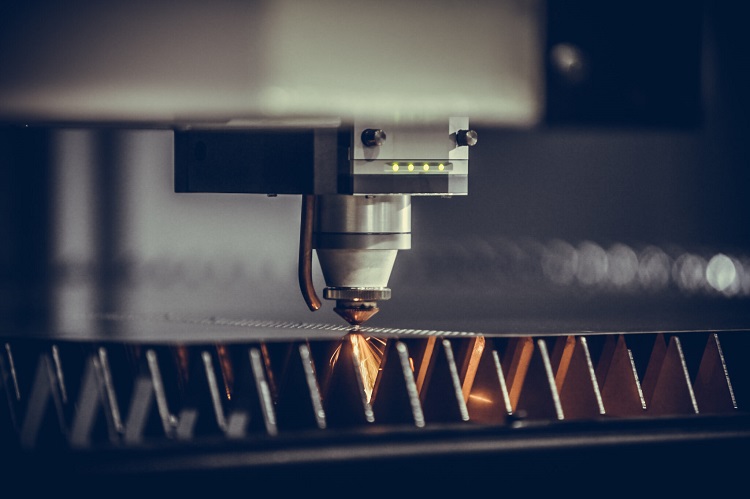Metal fabrication is an art that demands precision and skill, and the tools you use can make all the difference. As we move into 2024, high-precision cutter machines have become indispensable for fabricators aiming for perfection. With technological innovations, these machines are now more efficient, versatile, and user-friendly than ever before.
In this post, we’ll introduce you to the top high-precision cutter machines that are making waves in the industry this year. Each of these machines offers unique features that cater to a variety of cutting needs, ensuring that your projects are completed with exceptional accuracy and speed. Let’s explore the cutting-edge options that can transform your fabrication process.
Table of Contents
Plasma Cutters: Fast and Versatile
Plasma cutters are widely favored in metal fabrication for their efficiency and flexibility. They use ionized gas to cut through conductive materials like steel, aluminum, and copper with remarkable precision. One of their biggest strengths is handling a variety of metal thicknesses, making them suitable for everything from large-scale industrial tasks to detailed custom jobs.
These tools are especially known for producing smooth, clean edges, even on thick metal sheets. A plasma cutter can make short work of cutting through dense steel while maintaining a high degree of accuracy. With the addition of CNC technology, users can automate the cutting process, ensuring consistent and reliable results. This is why many professionals consider plasma cutters the top choice when it comes to speed and quality.
When choosing the best plasma cutter for your needs, it’s important to consider factors like cutting speed, material type, and the thickness of the metal you’ll be working with. Features like automated controls can significantly boost productivity, especially in high-demand environments. So, take your time to evaluate your options carefully and make a wise choice.
Fiber Laser Cutters: Clean Cuts with High Precision
Fiber laser cutters are known for delivering incredibly precise cuts, especially when working with thin metals. Unlike plasma cutters, which rely on heat from ionized gas, fiber lasers use concentrated light beams to cut through metal. This makes them ideal for projects that require fine detail and minimal material waste.
One of the main benefits of using a fiber laser cutter is its ability to produce smooth, clean edges without the need for extensive finishing. This is particularly useful in industries like aerospace and automotive manufacturing, where precision and finish quality are essential. Fiber laser cutters are also energy-efficient and can operate at high speeds, making them a great option for large-scale production. However, they’re best suited for thinner materials, as cutting through thicker metals can be slower compared to plasma or waterjet cutters.
Waterjet Cutters: No Heat, High Precision
Waterjet cutters stand out because they use high-pressure water, often mixed with abrasive particles, to cut through metal. What’s unique about this method is that it doesn’t involve heat, meaning there’s no heat distortion risk. This makes waterjet cutting perfect for materials that are sensitive to high temperatures, such as aluminum or titanium.
Waterjet cutters are incredibly versatile and can handle a wide range of materials, including thick metals. In fact, they can cut through materials that other tools struggle with, such as glass, stone, and composites. The precision level of a waterjet cutter is impressive, with smooth, clean cuts that require minimal post-processing. However, waterjet cutters tend to be slower than other methods, so they’re better suited for projects where accuracy is more important than speed.
Oxy-Fuel Cutters: Perfect for Thick Metals
An oxy-fuel cutter might be your best option if you’re working with thick steel. Oxy-fuel cutting uses a combination of oxygen and fuel gas (usually acetylene) to heat the metal to its ignition point, allowing for easy cutting through thick materials. This method is particularly useful for heavy-duty projects where other cutting tools may struggle to penetrate thick steel plates.
While oxy-fuel cutting may not offer the same level of precision as plasma or laser cutters, it’s incredibly effective for cutting through several-inch thick materials. It’s also a relatively affordable option, making it a go-to choice for industries like shipbuilding and construction. Just keep in mind that this method generates a lot of heat, so it’s unsuitable for materials sensitive to high temperatures.
Conclusion
When it comes to metal fabrication, choosing the right cutting tool depends on your specific needs. Each tool has its strengths, and the right one for you will depend on factors like the type of metal you’re working with, the level of precision you need, and your production goals.
But now you know the capabilities of each cutter, so you can make an informed decision and choose the tool that will help you achieve the best results in 2024.

